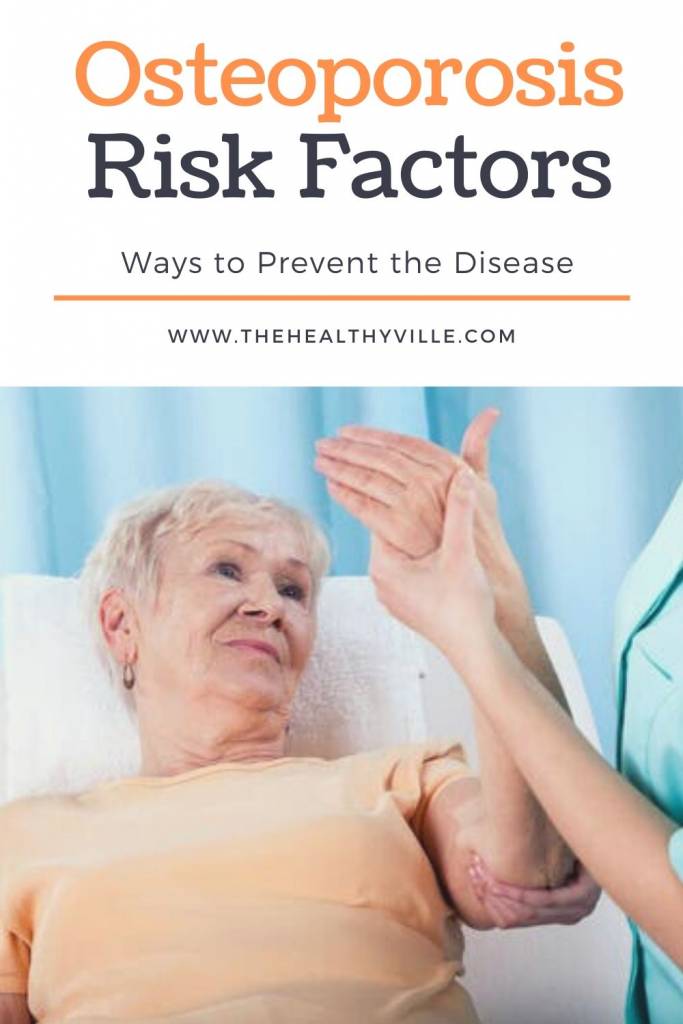Osteoporosis risk factors explain its presentation in certain population groups. It is a common disease that can affect both men and women.
Osteoporosis can be a limiting disease, but it is partly preventable. What are the risk factors that you can consider and control? We will tell you more about them.
It is characterized by decreased bone mass and increased skeletal fragility, leading to an increased risk of fractures. This condition weakens the bones and exposes them to injuries that would not otherwise appear.
The most common fragility fracture sites are the spine (in the form of compression fractures), the hip, and the wrist. It is estimated that in the United States, more than 53 million people already have the disease or are at high risk for osteoporosis due to low bone mass, according to the National Institutes of Health (NIH).
Osteoporosis risk factors
A fall from a standing height, hitting something, or simple trauma are sources of fractures when the bone density decreases. Not everyone reaches the extreme state of the disease, but there are risk factors that predispose to osteoporosis. Let’s see some.
Low calcium diet
Eating habits can increase the risk of developing osteoporosis. A diet without enough calcium and vitamin D will contribute to weak bones. Calcium helps build bone architecture, and vitamin D maintains bone strength.
Dairy products are rich in calcium, and some non-dairy products contain aggregates of this mineral. It can also be obtained from supplements, although the ideal is to achieve an intake of as much as possible in the natural way, that is, from food.
Vitamin D is available in fatty fish, such as salmon and tuna, and is added to many milks and cereals. The skin also produces vitamin D from sunlight. In any case, you must take care to avoid sun exposure at risky times.
Sedentary life
An inactive or long-term lifestyle tends to weaken the bones. The same happens when we must spend long periods prostrated due to illness or after surgery.
Rather, the bone responds to exercise by becoming stronger. Load and resistance exercises are best and include walking, jogging, climbing stairs, playing tennis, dancing, lifting weights, and using weight training machines.
Smoking
Smoking is bad for your bones, your heart and your lungs. Women who smoke often go through menopause earlier, since they have lower estrogen levels compared to nonsmokers.
Smokers can also absorb less calcium from their diets. When low estrogens are combined with poor calcium, it becomes impossible for the bone to rebuild what is damaged by aging. Thus, smoking is a notorious risk factor for osteoporosis.
Alcohol consumption
Excessive alcohol consumption increases the risk of bone loss and fractures in young women and men. It can, in turn, lead to poor nutrition and an increased risk of falling.
This without mentioning all the other deleterious health effects of the drug. Alcoholics can progress to liver failure, cardiovascular disease, and disorders of the central and peripheral nervous system.
Medication use
Long-term use of certain medications, such as glucocorticoids, aluminum-containing antacids, certain cancer treatments, thyroid hormone in excessive doses, and some anticonvulsants, can lead to loss of bone density and fractures.
Not all drugs are risk factors for osteoporosis, but it is essential that doctors who assess the interactions and conditions of the patient prescribe them. If there is a possibility of losing calcium among the adverse effects, it should be consumed with caution in menopausal women.
Other associated risk factors
Women have an increased chance of developing osteoporosis just because of sex. They have less bone tissue in proportion and lose bone faster than men due to the changes that occur with menopause.
It also happens that with older age, the risk of osteoporosis increases. Bones lose density with aging and become thinner and weaker. This is most noticeable in people who have a small body structure.
Similarly, a family history of early or unexplained fractures is a risk factor. Although it is not possible to speak of a family pathology, there are genetic links that explain the appearance in certain people.
Change risk factors to prevent osteoporosis
Osteoporosis is a condition that severely affects the quality of life. Although it is not possible to predict the future development of the pathology, you can identify the risk factors to prevent it.
Some characteristics cannot be changed, such as sex or age, but others are modifiable habits. Diet, exercise, sun exposure, and tobacco or alcohol use are all possible to change.
Don’t forget to SHARE the osteoporosis risk factors with your friends and family on your social networks!

